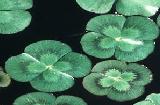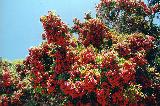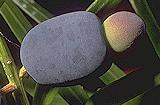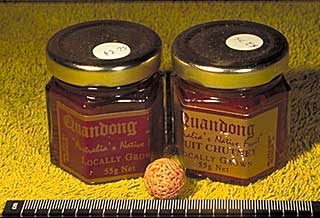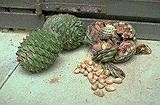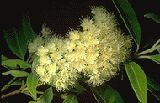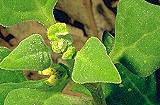So what bridged this rural-urban gap during the 1980's? The quick answer is probably that a few enterprising individuals, for example Vic Cherikoff, saw an economic opportunity and proceeded to act on it, with varying degrees of success. However, it was far more than this. Firstly, the increased interest in Australia's history and cultural heritage in the lead up to the Bicentennial celebrations certainly created a receptive atmosphere in our society. Secondly, an enhanced level of appreciation of Aboriginal culture and traditional knowledge reinforced this state of mind. The expansion in tertiary education, with the establishment of new universities and non-traditional courses, meant opportunities for academic research. This took place not only in history and botany, but in many related fields such as ethno-botany, human nutrition and the chemical composition of foods, and resulted in a wave of new publications in these disciplines. These publications were increasingly aimed at a general readership, as opposed to academic, and the format and presentation became more attractive and "user friendly" as the market grew. Then, the rise in disposable incomes and the proliferation of restaurants in Australian cities established a potential market for new and different foods, the way already having been paved by the upsurge in various Asian and other cuisines. There was, in addition, a widespread interest in food almost as an art form. Lastly, the 80's were also the decade of the pioneering work of Les Hiddens (then of the Australian Army), the archetypical "Bush Tucker Man", subsequently made famous by his hugely popular series of that name on ABC television. It was probably this, as much as anything, that "spread the word".
To begin with, the bush foods supplied to restaurants and manufacturers were all wild gathered, but it soon became obvious that if the fledgling industry were to be more than a flash-in-the-pan novelty, wild harvesting was unsustainable, and the crops would have to be farmed. This then meant nurseries to supply plant stock, which in turn meant quests for superior forms and research into propagation methods before potential producers could establish plantations, and then a substantial time lapse before farmed produce became available. It is in the fields of disseminating knowledge of species, and propagation methods, that SGAP has been most active, and the society's contribution has been considerable. So where are we now as we approach the 21st century? Certainly, the various strands of what could loosely be called the bush food industry have tended to coalesce into recognizable categories and become more defined, and a definite separation between the professionals, the amateurs, (and traditional Aboriginal communities who are often both), has become apparent. The professionals include gatherers and wild harvesters, growers, product brokers and wholesalers, propagators, wholesale and retail nurseries, scientists, consultants, academics, manufacturers, restaurateurs, chefs, retailers, authors and publishers. The knowledgeable amateurs, of whom SGAP members are the core, learn and experiment out of love and curiosity. Because we don't have to produce a commercial return, we enjoy a freedom not available to the professionals. If and when we have knowledge to share, it generally passes into the public domain. Therefore, in spite of the commercialisation of many of the indigenous plant foods of Australia, we amateurs still play an essential role. Most of the pioneering work of identifying possible species and initially propagating them was and is our contribution. So, of all the many hundreds of plants with edible parts, which ones are most widely known and consumed in this, their country of origin? These are not necessarily the same thing of course. Most older Australians know that Burke and Wills starved to death on Nardoo (an Aboriginal plant food made by grinding the sporocarps of the aquatic ferns of the genus Marsilea), but few have ever tasted it. On a different tack, most people know the Macadamia Nut, but many are unaware that it is a native - the Queensland Nut of my generation's childhood.
Therefore, what species could be regarded as the market leaders in the field? Let's take a closer look at some of those that qualify. Syzygium luehmannii, the Small Leaved Lillipilly, is marketed commercially as Riberry. The pink-red pear shaped fruit 10-15mm long are produced on a beautiful, highly decorative small tree. They taste of cinnamon and cloves, can be used in savoury and sweet dishes, and are generally sold frozen or as manufactured items such as sauces and preserves. They have been extensively planted as street and garden trees in south-east Queensland. Various other members of the genera Syzygium and Acmena are also marketed as Lillipillies, but do not yet enjoy the same popularity. The closely related Eugenia reinwardtiana or Beach Cherry is a very popular fruit in coastal Queensland, and is a desirable garden shrub with its shiny green leaves, scented white flowers and glossy red fruits. Citrus glauca (formerly Eremocitrus glauca) is the Wild or Desert Lime which grows on a small, prickly, almost leafless tree. The fruit can be quite variable in size, from 10 to 30mm in diameter, and light green or yellowish in colour with a thin skin. It is used whole or sliced, and sold frozen or as marmalades, sauces, dressings and seasonings. Because the trees are slow growing, experiments are being conducted involving grafting limes to exotic citrus rootstock in an effort to reduce the waiting time for the first harvest.
Another fruit with a citrus flavour, though it is not a citrus, is the Lemon Aspen or Acronychia acidula. This pale yellow fruit 20-25mm in diameter has small black seeds and a grapefruit/lime flavour. It is sold frozen or as juice or syrup, as well as in dressings, sauces, marinades and desserts. Terminalia ferdinandiana or the Kakadu Plum doesn't look like a plum at all, being small and pale green with a cling stone that necessitates the mildly apricot flavoured flesh being sliced free. It is its extremely high Vitamin C content that is the main selling point of this fruit, which is marketed frozen, in preserves and in ice-cream.
Davidsonia pruriens is the Davidson's Plum, which comes in two subspecies - pruriens and jerseyana from Queensland and the Northern Rivers respectively. The fruits are deep burgundy with a bluish bloom, and a high ratio of flesh to seed. The flavour is very tart plum, and it is usually sweetened and cooked in some way such as in sauces, dressings, desserts and preserves. It also makes a beautiful wine. Fruit is sold frozen. The trees are tall, large leaved and frost sensitive. Podocarpus elatus is sometimes known as Brown Pine, but is commonly marketed as Illawarra Plum. It is actually the swollen stem of the fruit, which is a small, hard seed which appears to hang off the bottom of the deep purple "plum" with its bluish bloom. The flavour is tart and plum-like, but less sour than the Davidson's Plum, with a pleasant, subtle resinous quality. Fruit should be blended or diced before cooking (use stainless steel utensils), and add lemon juice or vinegar. Illawarra Plum compliments chili and garlic in sauces and preserves, and has sweet uses in jams and jellies, fruit compotes, muffins and cheesecakes. It's usually sold frozen, but fresh fruit is often available in season in parks and gardens. The third of the so-called plums, and the least commercially developed, is the Burdekin Plum (Pleiogynium timorense) of Queensland. Quite well known and still eaten in the country, its biggest disadvantage is the comparatively large woody seed and the widely varying quality of wild fruits. There are red fleshed blood plums and the sweeter ones which are green/white inside. It can be eaten in the hand, (after holding for some days after picking), makes good preserves and a reasonable wine. At present it appears to be available only in manufactured goods.
Moving on from the native plums to the native peach or Quandong (Santalum acuminatum) we reach one of the best known and most popular Australian fruits. A native of the arid inland, the Quandong is a root parasite whose large red fruits with their sweet dry flesh are highly prized. Sold whole or halved, frozen or dried, and in all sorts of preserves, this is one of only two indigenous food plants to have been the subject of extensive organized research (largely sponsored by CSIRO in its early stages), with the result that there are now many commercial producers, and an Australian Quandong Industry Association. The nut kernels are also edible and commercially available. Morinda citrifolia, cheesefruit or great morinda is a soft pulpy edible fruit when ripe, smelling and tasting strongly of blue vein cheese and pineapple. It is sold as frozen juice for flavouring cream sauces, pasta, polenta, dips, marinades and dressings. However, it is the medicinal uses of the plant which have been the focus of major commercial development. Traditional Aboriginal uses included as an antiseptic and wound dressing, for colds and for diarrhoea, and a yellow dye was extracted from the roots. It is now being marketed as Tahitian Noni for the alternative health care market, as an antibacterial, analgesic, anticongestive, antioxidant, anticatarrhal, anti-inflammatory, astringent, emollient, laxative, sedative, hypotensive, and blood purifying agent.
Rubus probus (syn. R. fraxinifolius, R. muelleri), the Wild, Queensland, or Atherton Raspberry, is sometimes sold fresh at local markets, sometimes frozen, but usually as jam, syrup or vinegar. It bears heavily, but like its temperate counterpart of European origin, requires fairly intensive maintenance and hand harvesting as the fruit is easily spoiled. Its big advantage is its tolerance of comparatively high temperatures. Another fruit borne on a low prickly bush is Capparis lasiantha, the Nipan or Splitjack. Very popular in the country, it has potential rather than current commercial value, though there is some marketing of frozen pulp. And finally, at ground level, we find the Pigface or Beach Banana, Carpobrotus glaucescens, a very palatable fruit grown on sandy soils. The fleshy leaves are also edible, but it is the soft fruits which are generally sold frozen. Nuts and seeds have the advantage of easier transport and storage than fruits, and generally higher nutritional content by volume. Some of the most exciting and unexpected developments in bush food research is with these items. 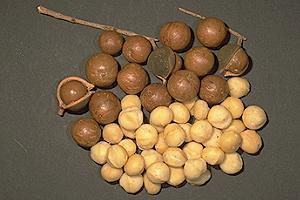 The Macadamia Nut owes its early commercial development not to Australia but to Hawaii; hence the very un-Australian names of many of the current plantation varieties, some of which are selected cultivars of Macadamia integrifolia, and some of which are hybrids. The Macadamia is a rich, oily, straw coloured nut encased in a thick, hard spherical shell. The nuts are sold dry, roasted, as savoury snacks and in confectionery, whole or in pieces. Macadamia oil is used as a flavouring oil in salads, dressings and pasta. There is an Australian Macadamia Society of producers who, through industry levies, are funding Australian based research relevant to their needs. Kurrajong coffee, made from the heavily roasted seeds of Brachychiton populneum, was widely used by early European settlers, and Aborigines ate the toasted seeds. Kurrajong flour made from roasted seeds is commercially available, and used to flavour breads, pancakes, muffins and similar items. Lightly roasted seeds can be cooked with rice for a nutty flavour and texture. The Australian equivalent of the starchy European chestnut is the Bunya Nut, Araucaria bidwillii, so important to the Aborigines that it was illegal to cut the trees on Crown Land in the nineteenth century, and it was recommended as a plantation species for food and timber as early as 1889. The Bunya Pines are very large, straight trunked trees with a characteristic rounded crown. The nuts are still eagerly sought after wherever they grow by those in the know, and can be purchased as frozen wholes or halves from bush food suppliers.
Acacia or wattle seeds were among the staples of the indigenous people of the inland, and recent research has revealed that many species are extremely nutritious; so much so that they are being used in reafforestation projects in Africa where food and fuel are high priorities. Some seeds such as Acacia coriacea are eaten green, others such as A.aneura and A.holosericea are milled. Dark brown wattle seed flour with its chocolate/coffee/hazelnut flavour is used as a flavouring in many different applications, both sweet and savoury, and as a hot drink, and is sold both ground and in manufactured products. Other edible varieties include A.stenophylla and A.victoriae. Leaves are also economically important. Backhousia citriodora, Lemon Myrtle or Lemon Ironwood, is a leaf crop harvested from a handsome rainforest tree, with a distinctive lemon flavour. The leaves are sold fresh chilled, whole dried, ground dried, or as an ingredient in products such as flavoured oils, syrups, pasta, preserves, teas and seasonings. As a bonus, they can be used in pot pourri and scented sachets. The tree in flower is not only a sight to behold, but a powerful butterfly attractant in the garden.
Its cousin, the Aniseed Myrtle or Backhousia anisata, has smaller, darker, wavy edged leaves with an aniseed or Pernod flavour with a sweetish after taste. Like the Lemon Myrtle, the leaves are sold fresh chilled, and dried whole or ground. They may be used whole as Bay leaves, in teas, or as a garnish in vinegars and oils. Ground it is an extremely versatile flavouring for a variety of savoury and sweet dishes. And finally, back to ground level again with two low growing leaf crops - one a vegetable, the other a herb. Tetragonia tetragoniodes, now marketed as Warrigal greens, but previously known as New Zealand Spinach or Botany Bay Greens, is often available fresh as well as frozen. It is cooked as spinach or Asian greens, blanched in salads, or used in pesto, quiches, stuffings and pasta. The plants grow naturally in sandy coastal soils and in the inland, assuming almost pest status in some broad land agricultural areas. It is quick growing and in demand in the restaurant trade. This was, in fact, the first indigenous food plant to be exported, growing in cottage gardens in Europe throughout the 19th century. Native thyme or basil, Occimum tenuiflorum, is a purple flowered herb of the inland with a flavour which is a combination of thyme, tarragon and rosemary. It is sold dried and ground, and is used as a seasoning in all sorts of savoury dishes. At present, it is wild harvested. There are now a number of bush food and new crop producer organizations and networks, and most state primary industry departments have some support mechanisms available. Specific information is now more widely available than ever before. Publications are shifting focus from general interest to commercial production and farm management, and so the wheel turns. In conclusion, there are compelling arguments in favour of increasing the biologically diversity around us, including our dietary choices. Choosing to grow and consume bush foods is one way of achieving this desirable outcome, as well as placing a value on wild areas as future sources of foods and medicines. In addition, there is the economic promise of new crops, and the lack of competition from overseas producers. Growing native species in mixed systems can provide habitats for native fauna and reduce reliance on the present standard few food crops, and the constant threat of a pest or disease with the potential to wipe out an entire harvest. Perhaps the twenty-first century is past time for this desirable state of affairs to become a reality. Bibliography
Lenore is the current leader of the ASGAP Australian Food Plants Study Group and editor of its newsletter, and Chairman of the Rockhampton Branch of SGAP, Queensland Region. While she grew up eating some of the more common wild foods such as Burdekin Plums, Prickly Pear Fruit, and Queensland and Bunya Nuts, it was reading the Cribbs' book, Wild Food in Australia, that awakened a wider interest. Overseeing her eldest son's school project on wild food plants was a learning experience for her too, and attending the Pine Rivers SGAP's Bush Food Dinner Party at the 1985 Brisbane ASGAP Conference soon after joining the Society saw her totally hooked. Unfortunately, work (teaching) interferes with her hobbies, so she doesn't spend as much time on them as she would like. This paper was originally presented to the ASGAP 20th Biennial Seminar, Brisbane, Queensland, 1999.  [Front Page] [Features] [Departments] [Society Home] [Subscribe] Australian Plants online - June 2000 |
||||||||||||||||||||||||||||||||


